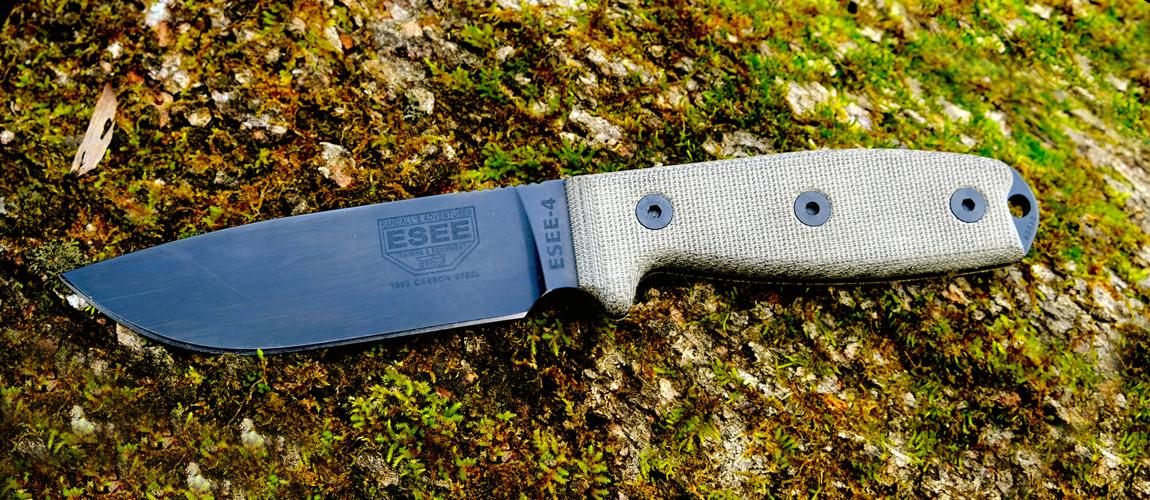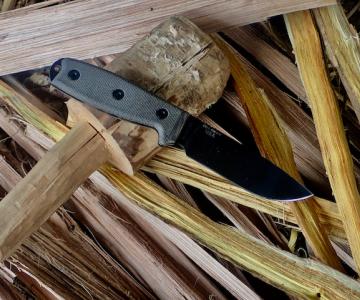
By Patrick Rollins
One of the many perks of working for ESEE is periodically getting to test new products. Recently one of our major dealers approached us with an uncoated ESEE 4 that he had applied a “black nitride” finish to the blade. The first thing I noticed was the smooth, frictionless surface of the blade. Our standard powder-coat does a wonderful job protecting the blade from rust, but in my opinion, can cause a tiny amount of “drag” when performing certain tasks. The black nitride is much smoother than a coating.
I was given one of the ESEE-4 knives to take home and evaluate to see if there was any adverse effect on performance and durability. Since heating the blade is part of the nitride finish process, I had questions on how it affected heat treat. I figured the best way to test that out would be to baton it through all sorts of seasoned hardwood. There is a lot of debate on the internet when it comes to batoning. I always teach using the best tool for the job if you have it. But I also want students to know how to get by with just a knife if that is all they have. In wet areas, you may have to process a lot of wood to get down to the dry inside. A good knife should be able to handle all the rigors that this can entail. So, I grabbed a mix of seasoned White Oak, Red Oak, Hickory, and even some Osage Orange and commenced to beating the living daylights out of it.
When batoning with one of our blades with the traditional powder-coat, you start to see some wear on the coating, which is perfectly normal for powder coating, and while we love the look of a well-used blade, some don’t. After beating the knife through several cuts of hardwood, the nitride finish held up amazingly well.
Next, I wanted to see the anti-corrosive properties of the finish. So, I wrapped the blade in a paper towel, soaked it with water, and let it sit out overnight. Typically, our powder-coated knives will rust anywhere there is exposed metal, such as along the edge and where there is any engraving. I wanted to see if the nitride finish would perform the same way. As expected, the areas of the blade with the finish did not rust and any exposed metal did.
I’m the worst person to ask about what to put on one of our blades to prevent rust or how to clean surface rust off. In most cases, we simply get out and use it some more and that usually solves all the surface rust problems. So, I took this one and batoned more wood. As you can see in the last photo, a good deal of the surface rust has been cleaned away. A little bit of warm water and a scotch brite pad took care of the rest.
All in all, I am extremely pleased with how the finish performed. At the time of this writing, I am not sure of what the plans are for this finish. But if I was a betting man, I would say we will be seeing it on some of our models in the future.






